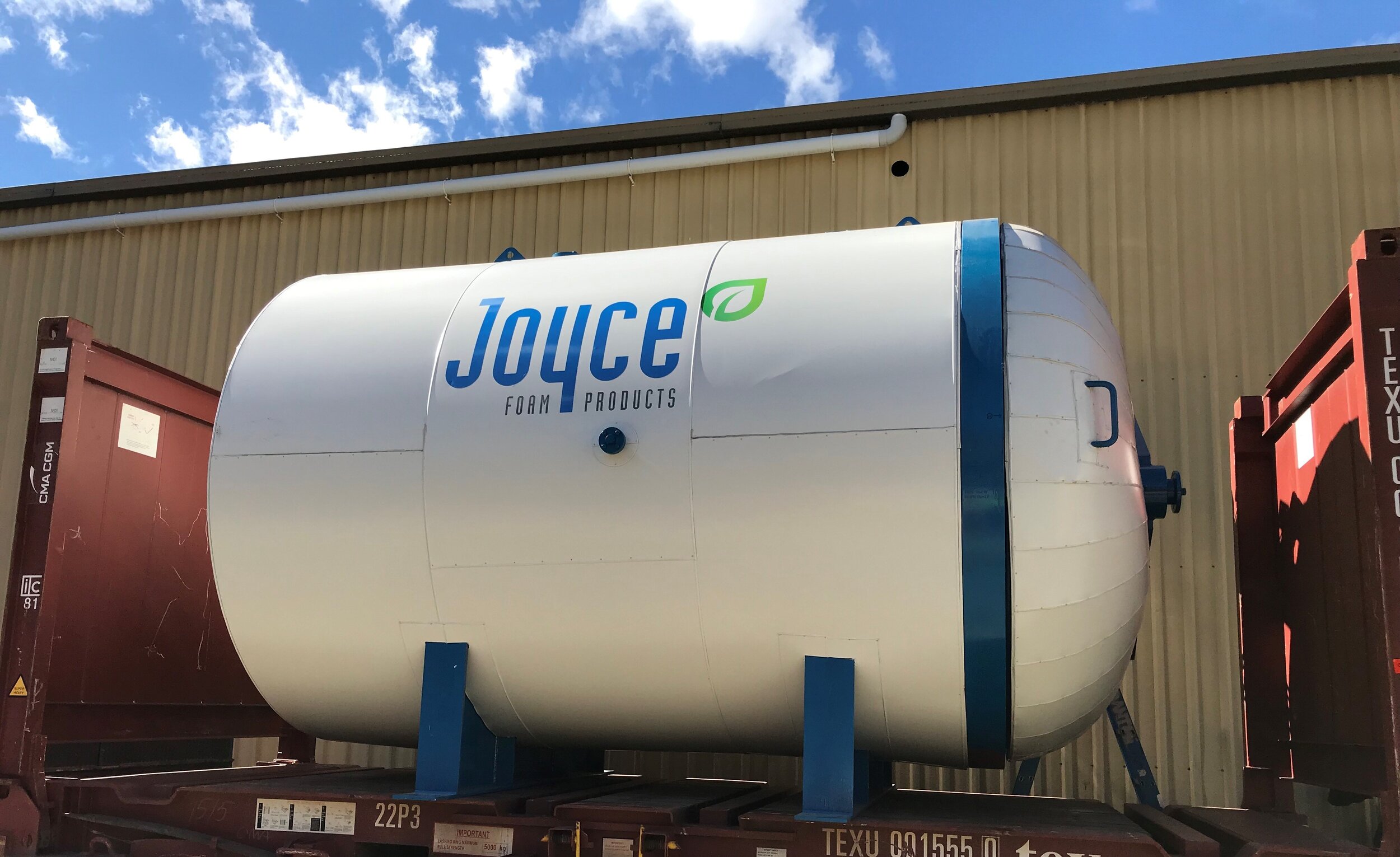Introducing the New Generation Thermal Reticulation Chamber
Advancing the production of open-cell foams.
When it comes to innovation, Joyce’s development of the Thermal Reticulation Chamber is a real breakthrough.
With a focus on continuous improvement, our Engineering Team has developed a new generation thermal reticulation chamber with even more design and safety features than earlier models.
We’re preparing to ship the first of these new chambers to Sheela Foam, India’s leading foam manufacturer. This is the second unit ordered by the company, and it’s expected to more than double their production capacity of high-quality reticulated foams.
What is foam reticulation?
The thermal reticulation chamber is used in the production of open-cell foams. The thermal reticulation process, also called “zapping”, creates a high-temperature, high-speed flame front that melts the cell membranes of the unprocessed foam and fuses them around the
main cell struts. At the completion of the process the cell struts remain, providing an open-cell filter - type structure in the foam block.
This process adds strength to the cell structure and helps to make the foam more durable.
A few facts about our thermal reticulation chamber technology
Zapper technology was developed in the 1980s.
The Joyce Engineering Team designs, assembles and tests the chamber units in-house at our headquarters in Moorebank, NSW.
Joyce is one of the few manufacturers of thermal reticulation chambers worldwide. We’re the only manufacturer in the Southern Hemisphere.
We’ve sold a total of 15 units to foam manufacturers in Taiwan, China, Thailand, Indonesia, India, Japan, South Korea and the United States.
7 benefits of the new generation Zapper
This latest reticulation chamber design introduces a safer, more automated process than past units.
It has many distinct benefits for foam manufacture:
1. You can fit 50% more foam inside the chamber. This means you can process larger blocks faster and more efficiently.
2. Unlike earlier models, the new unit only has one gas panel. This is a neater solution that reduces the amount of space needed to mount the panels.
3. Analogue flow meters and gauges are part of the new chamber design. They accurately track gas levels and won’t operate unless levels are within certain constraints.
4. An intuitive touch screen control panel makes the process more straightforward and reduces the risk of operator error.
5. The new system automatically calculates block volumes and gas fill time. Operators only need to measure the size of the block and enter these values into the touchscreen.
6. Built with extra safety features, the new unit helps eliminate the possibility of an accident caused by human error. These include a door opening and closing safety feature to prevent injury during operation.
7. The new chamber design incorporates a precision pressure sensor to detect vent blockages. The sensor also prevents the chamber door from opening if it detects positive pressure inside the chamber.
Ideal applications for ‘zapped’ foam
‘Zapped’ or reticulated foam has many applications. It’s commonly used for industrial, retail, automotive, and medical applications.
Its quick-dry qualities make it the perfect foam for leisure and outdoor furniture.
Reticulated foam is designed to fit many machine applications, as well as vacuum and air-conditioning filters.
It’s also used as an effective sound absorber in microphones, and as medical device padding.
For a complete list of applications and to find out more, contact our Customer Service team.


